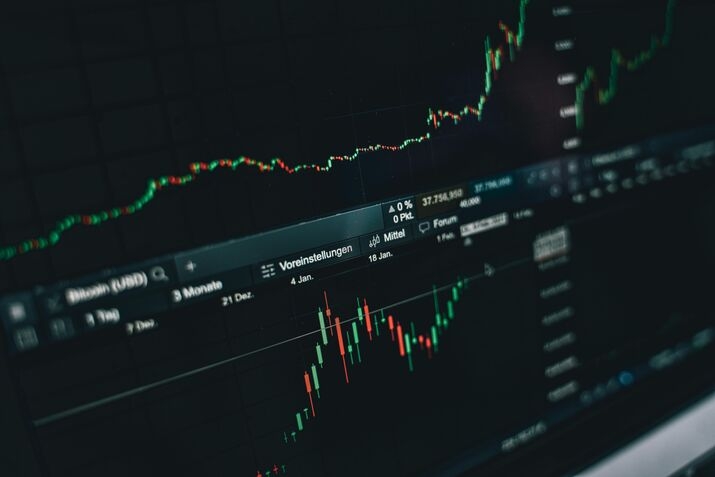Trading economics will almost always be a crucial topic to understand for an investor, a trader, or anyone interested in the US economy in today’s fast-paced setting that constructs everlasting markets. Taught right, trading economics can greatly assist a professional trader or a beginner in learning about market fundamentals and making their trade decisions. In this blog, you will learn the definition of trading economics, why it matters, and how it affects markets in the USA.
What Is Trading Economics?
Trading economics is the study of the economic data and indicators that influence the financial markets and trading decisions. Combining theories from economics with real data — GDP, inflation numbers, employment figures, trade balances — allows the study of market trends and the determination of economic prospects.
For US traders, keeping up with trading economics is critical, given the extremely strong nexus of this economy with global markets. Besides, an economic report issued by the US government or any other agency can instantaneously, sometimes even explosively, shift the direction of certain stocks at the commodities markets, currency levels, and bonds.
Why Is Trading Economics Important for USA Traders?
Informed Investment Decisions
Being one of the world’s largest and most influential markets, the US markets provide excellent market signals for traders who understand trading economics and interpret them in their news releases. Hence, traders know when to buy or sell an asset.
Predicting Market Movements
Economic indicators such as unemployment rate, consumer confidence, and manufacturing output offer insights into the health of the U. S. economy. Consequently, traders analyze these indicators to forecast market trends and adapt their strategies.
Risk Management
Economic changes generally lead to market volatility. Thus, understanding trading economics helps traders realize the potential risk early and hence protect their reliance through hedging or diversification.
Government Policy Insight
US financial markets are directly affected by the Federal Reserve’s monetary policies, mainly interest rate setting. Therefore, following economic developments allows the trader the ability to foresee policy decisions and to position themselves accordingly.
Key Economic Indicators to Put into Consideration in Tradingeconomics
Key economic indicators that anyone involved with trading economics within the USA ought to keep an eye on:
- Gross Domestic Product (GDP)
GDP is the broadest measure of the output for the US economy net value of all the goods and services produced in the country. It reflects economic growth and health. A stronger GDP would typically mean rising stock market trends and increase the confidence of investors.
- Unemployment Rate
Unemployment Rate measures the proportion of the labour force without a job and is actively looking for one. Low unemployment rates generally signify a strong economy, while an increasing unemployment rate signifies trouble.
- Inflation Rate
Inflation refers to an increase in prices for goods and services. While a moderate inflation rate is acceptable, a so-called high inflation rate compromises purchasing power. Thus, it could trigger the Fed to hike interest rates, which is adverse for markets.
- Consumer Price Index (CPI)
CPI reflects changes in prices paid by consumers for goods and services. It is an important indicator of inflation and a proxy for consumer behavior and spending.
- Trade Balance
The trade balance displays the difference in prices of exports and imports. Both trade deficits and surpluses impact the strength of the US dollar and stock markets.
- Interest Rates
Interest rates benchmarked by the Federal Reserve determine borrowing costs throughout the economy. Hence, any upward/downward adjustment will cause significant movement across equity, bond, and currency markets.

Utilizing Trading Economic in Trading Strategy
Below are a few practical tips on successfully applying trading economics to your investment plan:
- Always Follow Economic Reports
Economic data are released regularly by the US government agencies. So, always mark your calendar for reports like Non-Farm Payrolls (NFP), Consumer Confidence Index, and Federal Reserve announcements. These economic data reports can be retrieved through reliable sources such as the Bureau of Economic Analysis (BEA), U. S. Department of Labor, and Federal Reserve websites.
- Pair Economic Data with Technical Analysis
While trading economics centers on fundamentals, it is even better to combine it with technical analysis, greatly enhancing the traders’ perspective. For instance, you may use price charts, volume indicators, and trend patterns with economic reports to better identify the timing of your trades.
- Diversify Your Portfolio
Economic rounds can uniquely influence individual sectors. For example, interest rate hikes can help financial stocks but hurt the real estate sector. Being aware of these factors helps create a diversified portfolio that carries on through economic shifts.
- Gain Access to Expert Commentary and Market Analysis
Stay updated by reading economists’, analysts’, and trading platform analysis in the US markets. Their studies in trading economics will direct your attention to opportunities or alert you to a risk you might have missed.
- Utilize Trading Economics Websites and Tools
Various online platforms aggregate economic data and interpret it for the trader. Websites such as TradingEconomics.com offer up-to-the-minute data, forecasts, and historical charts for economic indicators from across the globe, including the USA. Getting into these resources should improve your understanding of the market and firm up your trading decisions.
Trading Economics and the US Stock Market
The US stock market is reactive to economic data. Positive indicators usually put upward pressure on the stock prices as better corporate earnings are anticipated by the investors. On the other hand, dismal indicators often lead to a selling spree.
For instance, an unexpected drop in unemployment rates through an inflation spike could see stocks in the retail and consumer goods sector rally in anticipation of increased spending. However, this could lead the Federal Reserve to execute an interest rate hike, which might slow economic growth and thus be a bearish factor for stocks.
Therefore, understanding trading economics allows traders to foresee those market reactions and profit from them.
The Role of Trading Economics in Forex and Commodities
Trading economics plays an equally important role in the foreign exchange (forex) and commodities markets in the USA.
- Forex: Economic data determines the US dollar’s strength. Traders can rightly anticipate dollar appreciation and depreciation by watching GDP growth or trade balance, thus influencing such currency pairs as EUR/USD or USD/JPY.
- Commodities: The price trajectory of commodities, such as gold, oil, and agricultural products, is sensitive to economic trends. For instance, when the US economy is doing well, oil demand will generally increase, consequently increasing the price.
How Trading Economics Can Help You Avoid Common Mistakes
Often, new traders jump into markets without understanding the economic forces at play, supplying them with unpleasant timing and losses. Incorporating trading economics into your research means that you can avoid common blunders such as:
- Ignoring major economic events
- Misinterpreting data releases
- Overreacting to short-term market noise
Instead, you will have a more even perspective that considers both the current state of economic fundamentals and where the market stands with regard to sentiment.
Conclusion: Master Trading Economics to Succeed in the USA Market
Training economics is not a passing term but a powerful system that assists traders and investors in making smarter, data-driven decisions in the United States financial markets. This includes the ability to forecast market movements and manage risk effectively by having accurate knowledge about important economic indicators and tracking changes in policy through reliable economic tools.
For traders willing to pursue the USA market, embracing trading economics is a fair step toward lasting success and profitability. Take a back seat for a moment, look up to trading economics, and then go ahead and integrate it with your trading strategy today, and your confidence and win record will shoot up into the sky.



